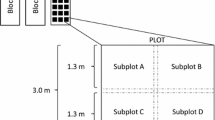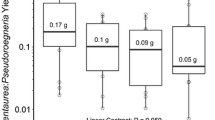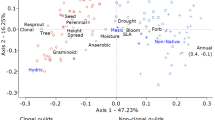Abstract
In the years since Charles Elton proposed that more diverse communities should be less susceptible to invasion by exotic species, empirical studies have both supported and refuted Elton's hypothesis. Here, I use grassland community microcosms to test the effect of functional diversity on the success of an invasive annual weed (Centaurea solstitialis L.). I found that high functional diversity reduced the success of Centaurea by reducing resource availability. An equally important, but unstudied, question is whether diversity can buffer a community against the impacts of invasive species. In this experiment, although species diversity (independent of functional diversity) did not affect the success of the invader, the invader suppressed growth of species-poor communities more strongly. Invasion of Centaurea also increased summer evapotranspiration in species-poor communities. These results suggest that loss of species diversity alone does not affect community invasibility, but that communities with fewer species may be more likely to decline as a consequence of invasion.
Similar content being viewed by others
Author information
Authors and Affiliations
Rights and permissions
About this article
Cite this article
Dukes, J. Biodiversity and invasibility in grassland microcosms. Oecologia 126, 563–568 (2001). https://doi.org/10.1007/s004420000549
Received:
Accepted:
Published:
Issue Date:
DOI: https://doi.org/10.1007/s004420000549




